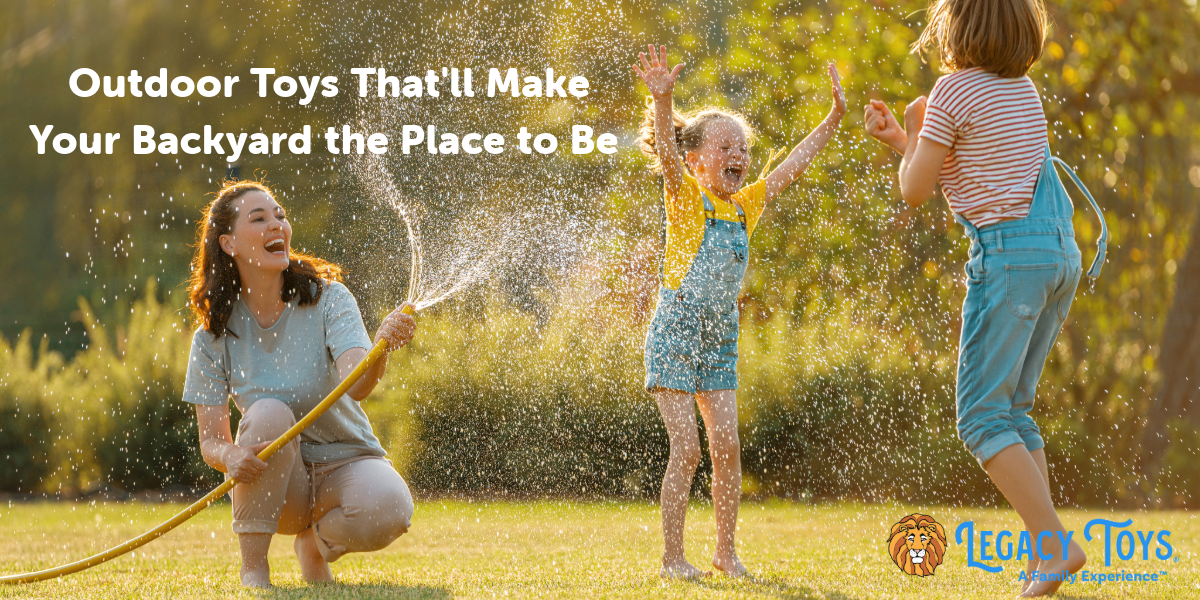One of the most requested items at Legacy Toys by kids and their caregivers is fidgets! What may have started as a fad a few years back has emerged as one of the most popular and requested items at Legacy Toys. Fidgets have evolved from the fidget spinner to very sophisticated, fun, and useful ways to both play and promote focus. Even more than a cognitive tool, the list of pros for fidgets is continually growing:
- Stress/Anxiety Relief
- Supports calm and relaxation
- Aides in physical therapy, wrist and finger strength
- Hand strength and dexterity
- Strengthens tactile and fine motor skills
- Eases arthritic pain by increasing circulation and reducing stiffness
- Solution for sensory seekers
- Promotes focus
- A healthy way to use repetitive actions to calm overactive nervous systems
Believe it or not, there is science behind fidgeting. Have you ever found yourself pacing while on the phone, chewing gum while taking a test or reading, twirling your hair, cracking your knuckles, clicking your pen, or doodling while in a meeting? These types of fidgeting allow us to stay focused on the task at hand and keep us engaged and on track. Research shows that a little fidgeting can increase neurotransmitters in the brain that control focus and attention. Science has found that physical activity, including fidgeting, can increase dopamine and norepinephrine levels enhancing cognitive performance.
Now more than ever, we recognize that sensorimotor activities are a healthy, natural, and normal way to adjust when activities can’t sustain attention. However, not all fidgets are created equal and may work differently for different people. ADDitude Magazine says,
“Fidgeting must be deliberate to be effective. Intentional fidgets allow you and your child to self-regulate in a controlled, constructive fashion. An effective fidget doesn’t distract you from your primary task because it is something you don’t have to think about.”
A fidget your child uses in the home may look very different from a fidget they take to school or public places. In some instances, fidgets that make noise, or click, might be a child’s favorite; but may cause distraction in a classroom setting. Ensure you are checking in with your school and child’s teacher regarding what is recommended or appropriate. Many teachers see the fidgets’ value and may even offer them in the classroom should a student ask. Have your child and teacher come up with rules about fidgets in school, when they should use them. Some teachers might require fidgets kept in a designated area of the classroom. Frequently fidgets can be tools written into IEP and 504 plans for students with learning differences to aid in regulation and focus.
More than just at school, fidgets are an excellent tool for the whole family to use at home, whether learning at home, doing homework, prolonged non-preferred activities, or being stuck at home during a pandemic. Consider having a fidget basket or box in the family or living area easily accessible to everyone. A basket can easily blend in with your home decor and go unnoticed, or you could pull out the glitter, glue, and paper and decorate the fidget box! A caveat to the fidget basket would be if there are younger children in the home, consider safety over accessibility first. If your child is learning at home, consider having a few of their favorites sitting right on their desk or workspace. Having a variety of fidgets is like a toolbox. What might work for one thing or work one day may not work the next; fidgets are not one size fits all, just like screwdrivers. We find all sizes and types in our toolboxes and need options to do the task.
How do I find the right fidget? Consider what your child wants and needs. If you have a child that lacks fine motor skills, having a fidget that regularly works those muscles will be helpful but not always satisfying. Be open to having a variety for your child to try and use. The child lacking fine motor skills will undoubtedly benefit from a fidget that works those muscles and will have to build up usage over time. That is why the variety of fidgets is so vast with so many options. Fidgets can also vary in quantity and quality from one dollar to twenty dollars or more, depending on the material and sophistication.
Ask your child what they like. If you can’t get to Legacy Toys to try some fidgets, here are some questions to ask:
- What fidgets have you tried that you like?
- Soft and squishy or hard and prickly?
- Smooth or bumpy?
- Do you need something you can chew?
- Are clicks or pops distracting, or do you like the sounds?
- Putty or sand?
- Twisty or solid?
- One-handed or two-handed manipulation?
- What colors are calming? Stimulating?
- What would be distracting? Helpful?
- What places/environments would using a fidget be helpful?
If all else fails, check out the Legacy Toys website and browse our fidget section together. Chances are, your child is going to be familiar with many of the offerings. As fidgets have found their way into the mainstream, children feel more at ease using them and are more likely to advocate for themselves if they think they would be helpful. Consider all children have different learning styles and their unique likes and dislikes, so what may work for one child may not work for another. Is the fidget the modern miracle to inattentiveness and distractibility? Certainly, no. But it is a resource that can help kids become more successful in their learning environment and sensory regulation. Based on the sheer number of fidgets available and what seems only to be a growing market, fidgets are here to stay.
It is essential to understand that children may ask or want fidgets because they are so widely available and accepted, not because there is something “wrong.” We all struggle with staying on task from time to time, and merely saying, “stay still” or “quit wiggling” aren’t always going to correct the behavior or stop it. As I write this now, I am tapping my foot, unknowingly, to keep myself on task. Societal acceptance of fidgets for children and adults has led to more research and resources for fidgets as an outlet and regulation tool. We’ve found a way to make the pen-clicking of the past resourceful, useful, and less distracting. Fidgets supplement our natural human reactions and needs.
We’ve explored how fidgets are a great tool, but what differentiates them from being a toy? Let’s look at how are they used. Many fidgets out there are multi-purpose, a two for one! In the world of social media alone, fidgets have their niche. Children can use them appropriately in a learning environment, but they can also be a world of fun! Fidgets that help our kids increase focus and cognition can also be entertaining games. Many fidgets that started as games have become some of the most popular fidgets. Take a look at the Rubik's cube, for example; solve it or just twist and play with it in your hands. How fast can you pop all the dots on the Pop Itz, or place a marble under the bottom side of the Pop Itz randomly and go until you hit the marble. Fidgets are getting kids off the screen and moving, increasing blood circulation, and sparking the imagination.
We see this all the time in the store with the Boinks. Way more fun than a finger trap! Kids can use these as fidgets with one hand, rolling it or manipulating it in a quiet environment. But when we show kids how they “boink,” it leads to running, laughing, and some pretty awesome spidey-shooting at targets.
While putty is probably the most recognized and mobile fidget, slime, Kinetic sand, and Mad Mattr offer some sensory regulation to kids while also getting those hands working improving dexterity and motor skills. Playing with these sensory items is both satisfying and can promote imaginative and creative play. Fill a plastic bin with sand or slime and use tiny animal figurines and have your child tell a story. Add some beads with lettering into the slime, have your child pick spell out words you’ve written on notecards, or find their names.
So are fidgets a toy or tool? We say both, and they are here to stay.




































































